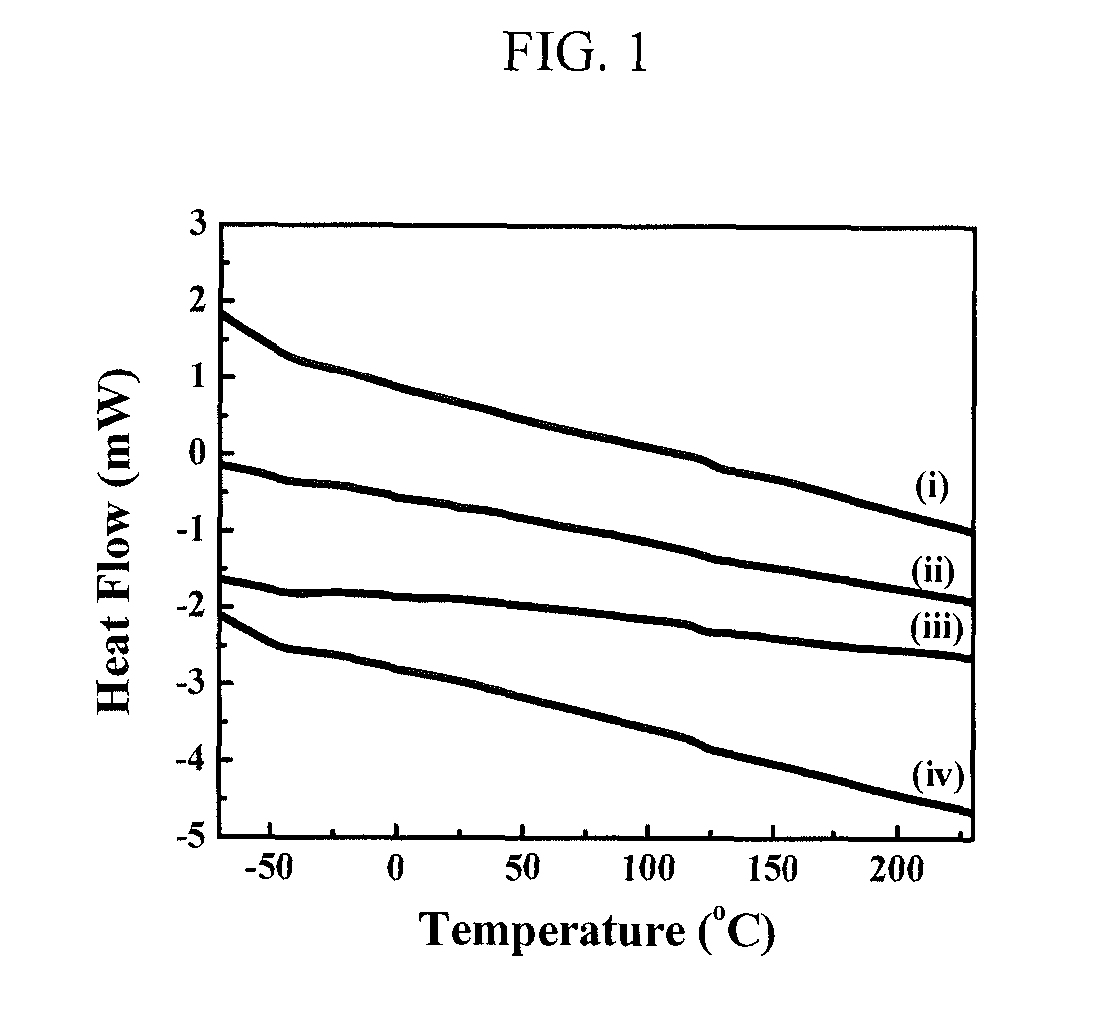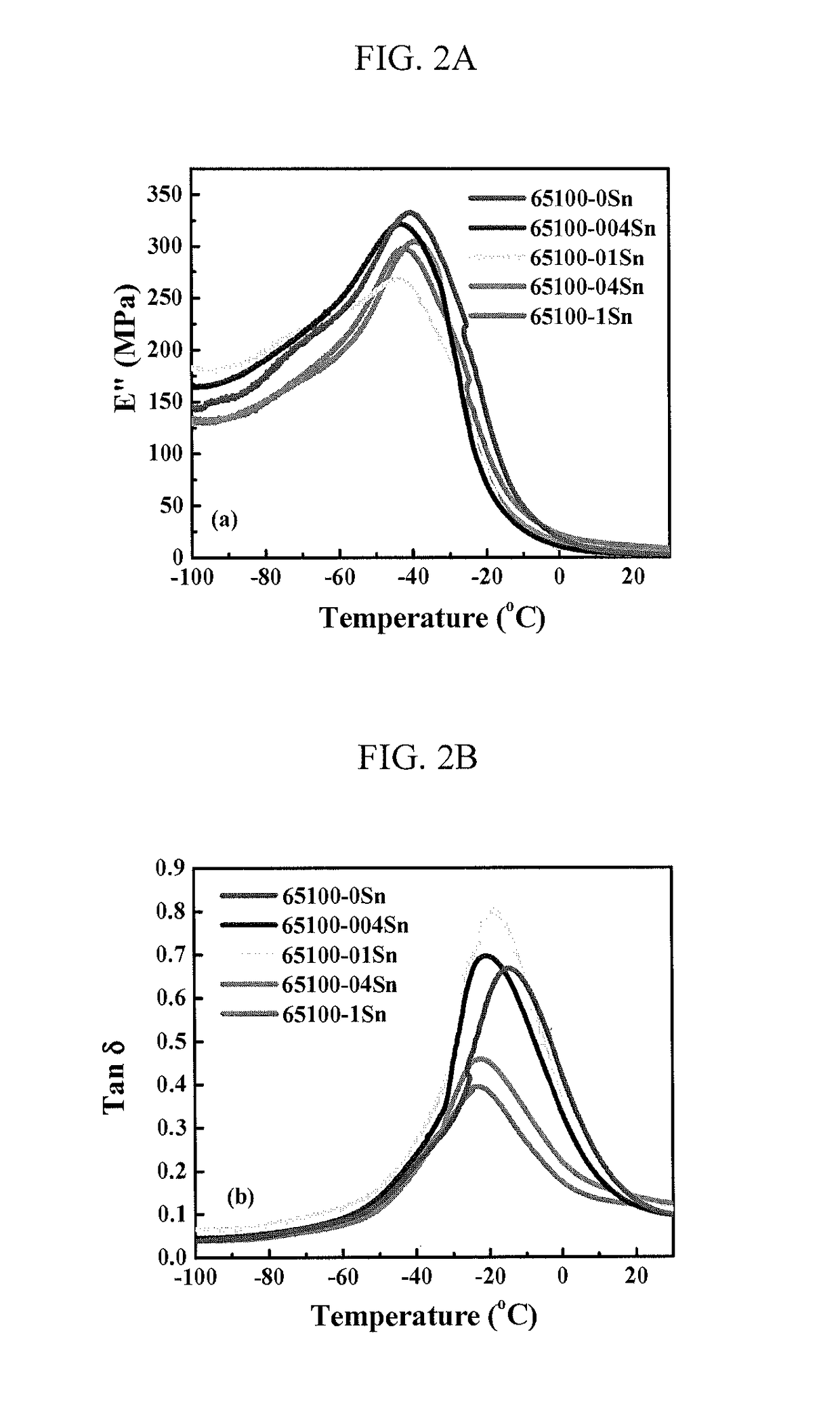High strength polyisobutylene polyurethanes
a polyisobutylene polyurethane, high-performance technology, applied in the field of high-performance polyisobutylene polyurethanes, can solve the problems of limited use of polyurethanes for long-term applications, insufficient mechanical properties, and general in vivo bioinstability, and achieve the effect of improving tensile strength and percent elongation
- Summary
- Abstract
- Description
- Claims
- Application Information
AI Technical Summary
Benefits of technology
Problems solved by technology
Method used
Image
Examples
example 1
on of PIB (allyl-OH)2
[0113]Br-Allyl-PIB-Allyl-Br (Mn=2200, 50 g, 0.023 mol) was dissolved in dry THF (1 liter) and a solution of KOH (50 g, 0.9 mol) in distilled water (500 mL) was added to it. The mixture was heated for 3 hour at 130° C. in a reactor. The reaction was cooled to room temperature. The THF was evaporated using a rotary evaporator. Distilled methanol (500 mL) was added and the precipitate was allowed to settle down. The precipitate was further dissolved in hexanes (200 mL) and slowly added to methanol (600 mL). The sticky mass was allowed to settle down. The process was repeated two times and the purified polymer was finally dried under vacuum at room temperature for 24 hour. Yield: 99%, GPC-MALLS: Mn=2400, polydispersity index (PDI)=1.16.
example 2
of Polyisobutylene-Based Thermoplastic Polyurethane (PIB-TPU) Using PIB(OH)2
[0114]To a 100 mL three-neck round bottom flask equipped with mechanical stirring and nitrogen purging, 5.20 g PIB(OH)2 (2.60 mmol) was added and dried under vacuum at 60° C. overnight to remove moisture. After that, 20 mL dry toluene was added to dissolve the PIB(OH)2, and 1.76 g MDI (6.8991 mmol) was added subsequently at room temperature. The mixture was stirred at 100° C. for 2 h, and then 0.3662 g BDO (4.1691 mmol) and 1.1 mg Tin (II) 2-ethylhexanoate (0.0028 mmol) were added. The mixture was further stirred at 100° C. for 4 h and cooled to room temperature. The polymer was cured at room temperature under nitrogen purging for 1 week and then dried at 70° C. under vacuum overnight to remove residual solvent.
[0115]Five PIB-based TPUs were prepared and their characteristics are listed in Table 1. These TPUs were synthesized via the procedure in Example 2 using Sn(oct)2 as the catalyst. For all the TPUs, m...
example 3
of Polyisobutylene-Based Thermoplastic Polyurethane (PIB-TPU) Using PIB(Allyl-OH)2
[0117]TPUs using PIB(allyl-OH)2 were prepared by a method analogous to the PIB(OH)2-based TPU synthesis described in Example 2. Table 2 represents the number average molecular weight and MWD of PIB(allyl-OH)2 based TPUs.
[0118]
TABLE 2Molecular Weight and MWD of TPUsSynthesized Using PIB(allyl-OH)2CatalystConcentrationMnRun(%)(kg / mol)MWDPSPU-10.0458.31.79PSPU-20.1096.52.25PSPU-30.4078.01.80PSPU-41.0092.01.95
Thermal Analysis of PIB(OH)2-Based TPUs
[0119]The thermal properties of the PIB(OH)2-based TPUs in Table 1 were subsequently investigated. PIB-TPUs, in most cases, do not have pure soft segment (SS) and hard segment (HS) microphase separation from each other. Instead, the microphase separated structure of TPU contains a soft phase (SP) and a hard phase (HP), where SP is formed by the dissolution of some HS into the SS, and HP consists of HS that phase separates from the SP. Measuring the glass transit...
PUM
| Property | Measurement | Unit |
|---|---|---|
| molecular weight | aaaaa | aaaaa |
| polydispersity index | aaaaa | aaaaa |
| polydispersity index | aaaaa | aaaaa |
Abstract
Description
Claims
Application Information
 Login to View More
Login to View More - R&D
- Intellectual Property
- Life Sciences
- Materials
- Tech Scout
- Unparalleled Data Quality
- Higher Quality Content
- 60% Fewer Hallucinations
Browse by: Latest US Patents, China's latest patents, Technical Efficacy Thesaurus, Application Domain, Technology Topic, Popular Technical Reports.
© 2025 PatSnap. All rights reserved.Legal|Privacy policy|Modern Slavery Act Transparency Statement|Sitemap|About US| Contact US: help@patsnap.com



